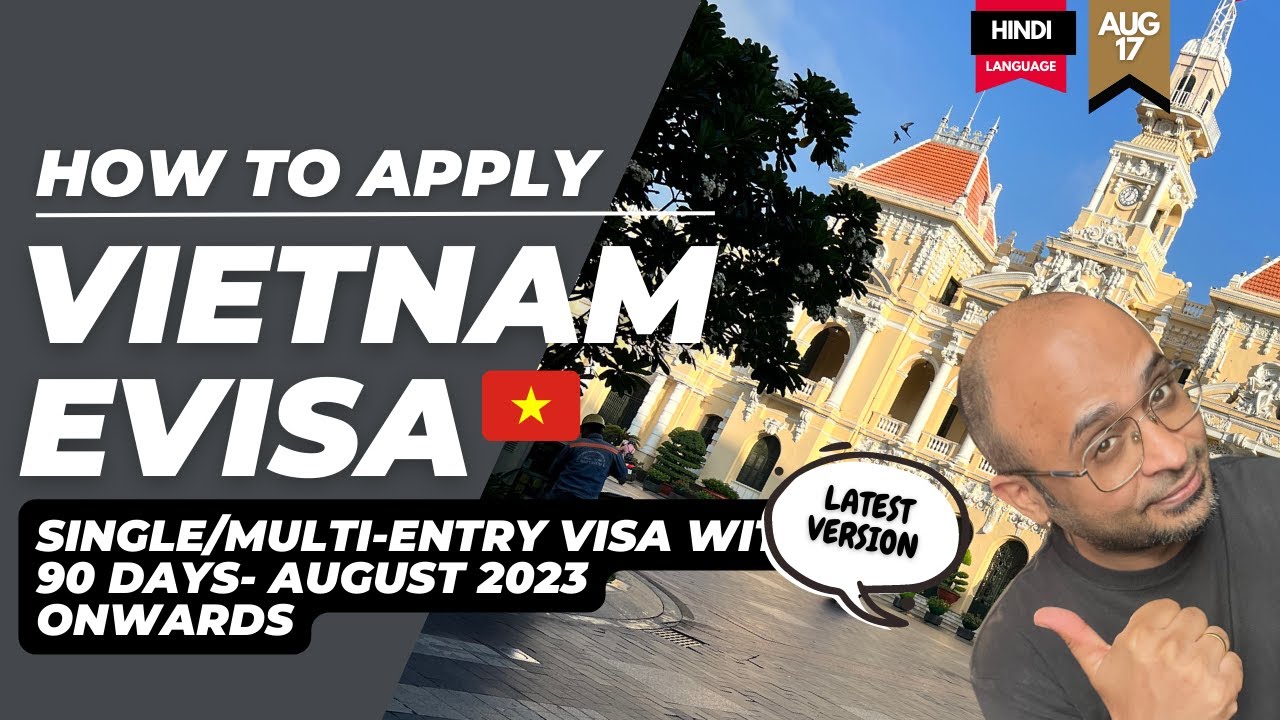
How to apply for Vietnam evisa | 2023 update
Vietnam e-visa (or Vietnam electronic visa) allows eligible travelers to apply for and obtain a visa to Vietnam completely online. This online system was introduced by the Vietnam Immigration Department in February 2017 to facilitate visa application for citizens of eligible countries.
Instead of having to submit an application in person at a Vietnamese embassy or consulate, travelers can now complete the entire visa process from the comfort of their home or office via the internet. The Vietnam e-visa system has made obtaining a visa to visit Vietnam much more convenient for millions of foreign tourists and businessmen.
What is Vietnam eVisa?
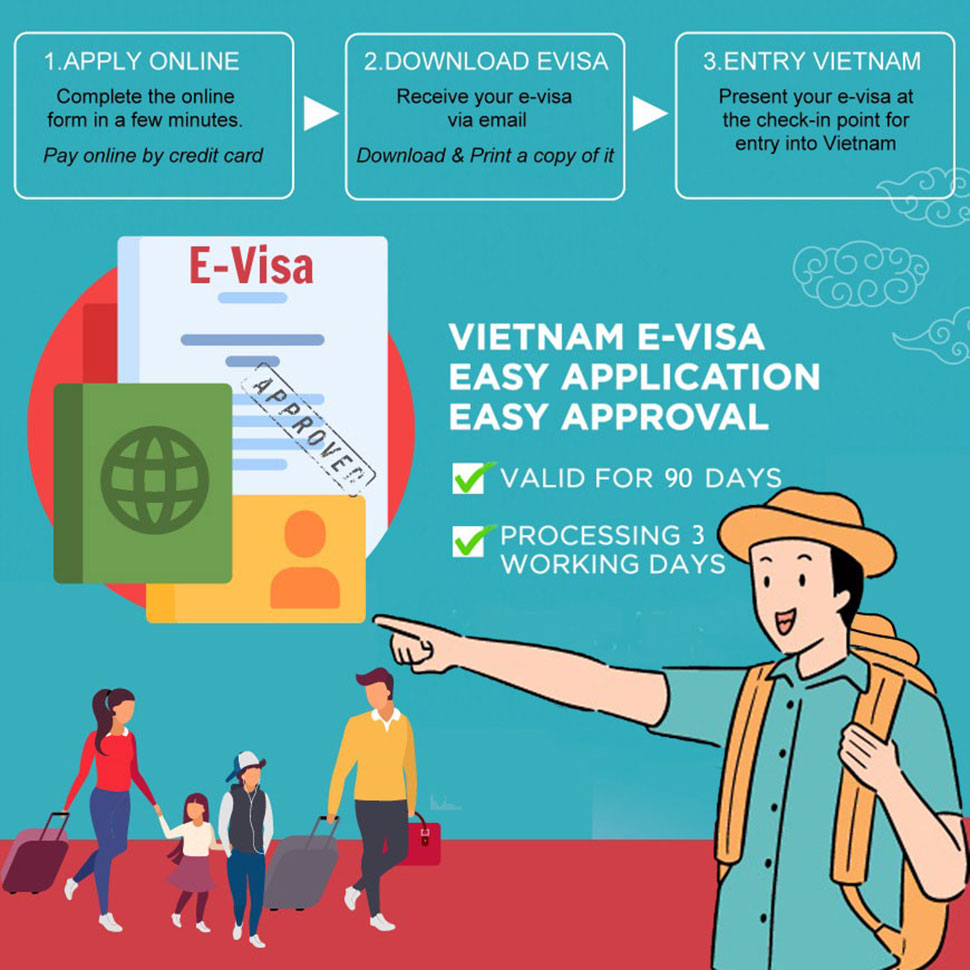
Vietnam e-visa (sometimes written as eVisa or e-Visa) refers to the electronic visa system introduced by the Vietnamese government in 2017. It allows citizens of eligible countries to apply for either a single-entry or multiple-entry visa valid for up to 30 days online without having to visit a Vietnamese embassy or consulate.
Eligible applicants simply need to complete an online application form, upload supporting documents, make the visa fee payment electronically, then wait for the approval letter to be emailed to them. The whole process typically takes 3 working days.
Instead of a traditional sticker visa, the Vietnam e-visa is a letter that is emailed to the applicant in PDF format. It contains the visa details (name, date of birth, nationality, passport number, dates of entry etc) as well as a unique QR code.
Applicants must print out the visa approval letter and present it to immigration officers upon arrival in Vietnam along with their passport. The QR code will be scanned to authenticate the visa.
Vietnam evisa country list
The Vietnam e-visa country list is a list of countries whose citizens are eligible to apply for an electronic visa (e-visa) to Vietnam. An e-visa is a type of visa that is issued online and does not require the applicant to visit a Vietnamese embassy or consulate.
As of August 15, 2023, the Vietnam e-visa country list includes all countries and territories in the world. This means that citizens of all countries are now eligible to apply for an e-visa to Vietnam.
To apply for a Vietnam e-visa, applicants must have a valid passport and a valid email address. They must also complete an online application form and pay a visa fee. Once the application is approved, the applicant will receive an e-visa via email. The e-visa must be printed out and presented to the immigration officer at the port of entry into Vietnam.
The Vietnam e-visa is valid for a single entry or multiple entries, depending on the type of visa applied for. The visa is valid for a period of 30 or 90 days, depending on the duration of stay selected in the application form.
The Vietnam e-visa country list is subject to change at any time. It is important to check the latest list of eligible countries before applying for an e-visa.
Here are some of the benefits of using a Vietnam e-visa:
- It is a convenient and easy way to apply for a visa to Vietnam.
- Applicants can apply for an e-visa from anywhere in the world.
- The e-visa is valid for a single entry or multiple entries, depending on the type of visa applied for.
- The e-visa is valid for a period of 30 or 90 days, depending on the duration of stay selected in the application form.
- The e-visa fee is relatively low.
If you are planning to visit Vietnam, I recommend that you apply for an e-visa. It is a convenient and easy way to get the visa you need to enter the country.
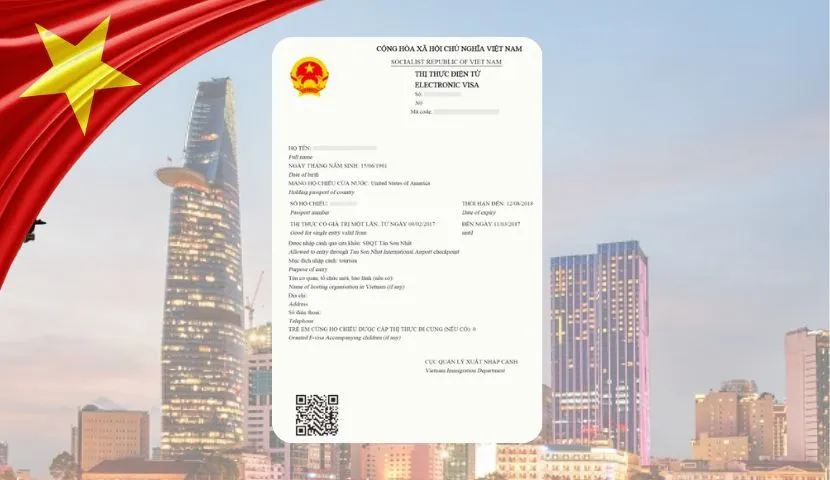
Applicable Ports of Entry for Vietnam eVisa online
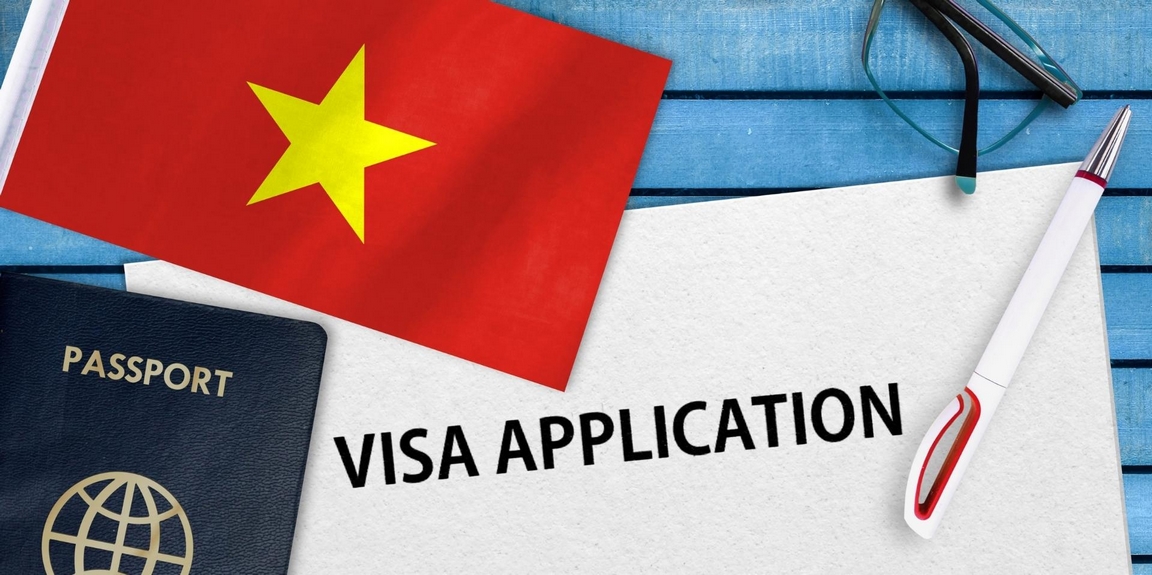
Foreign visitors who obtain an approved Vietnam e-visa can enter Vietnam through any of the following ports of entry:
Airports
- Noi Bai International Airport (Hanoi)
- Tan Son Nhat International Airport (Ho Chi Minh City)
- Da Nang International Airport
- Cam Ranh International Airport
- Cat Bi International Airport (Hai Phong)
- Phu Bai Airport (Hue)
- Phu Cat Airport (Binh Dinh)
- Lien Khuong Airport (Da Lat)
- Can Tho International Airport
- Van Don International Airport (Quang Ninh)
- Vinh Airport (Nghe An)
- Tho Xuan Airport (Thanh Hoa)
Land border gates
- Lao Cai (bordering China)
- Huu Nghi (bordering China)
- Mong Cai (bordering China)
- Huu Nghi (bordering China)
- Nam Can (bordering Laos)
- Cau Treo (bordering Laos)
- Lao Bao (bordering Laos)
- Cha Lo (bordering Laos)
- Na Meo (bordering Laos)
- Bo Y (bordering Cambodia)
- Moc Bai (bordering Cambodia)
- Xa Mat (bordering Cambodia)
- Tinh Bien (bordering Cambodia)
- Vinh Xuong (bordering Cambodia)
- Ha Tien (bordering Cambodia)
Seaports
- Hai Phong Seaport
- Chan May Seaport (Thua Thien Hue)
- Da Nang Seaport
- Nha Trang Seaport
- Quy Nhon Seaport
- Vung Tau Seaport
- Ho Chi Minh City Seaport
- Hon Gai Seaport (Quang Ninh)
- Cam Pha Seaport (Quang Ninh)
- Hai Phong Seaport
- Cua Lo Seaport (Nghe An)
- Qui Nhon Seaport (Binh Dinh)
- Vung Ang Seaport (Ha Tinh)
The port of entry must be specified in the visa application, as applicants will only be permitted to enter Vietnam through the nominated port. Attempt to enter through any other port could result in denied entry.
Vietnam eVisa Requirements
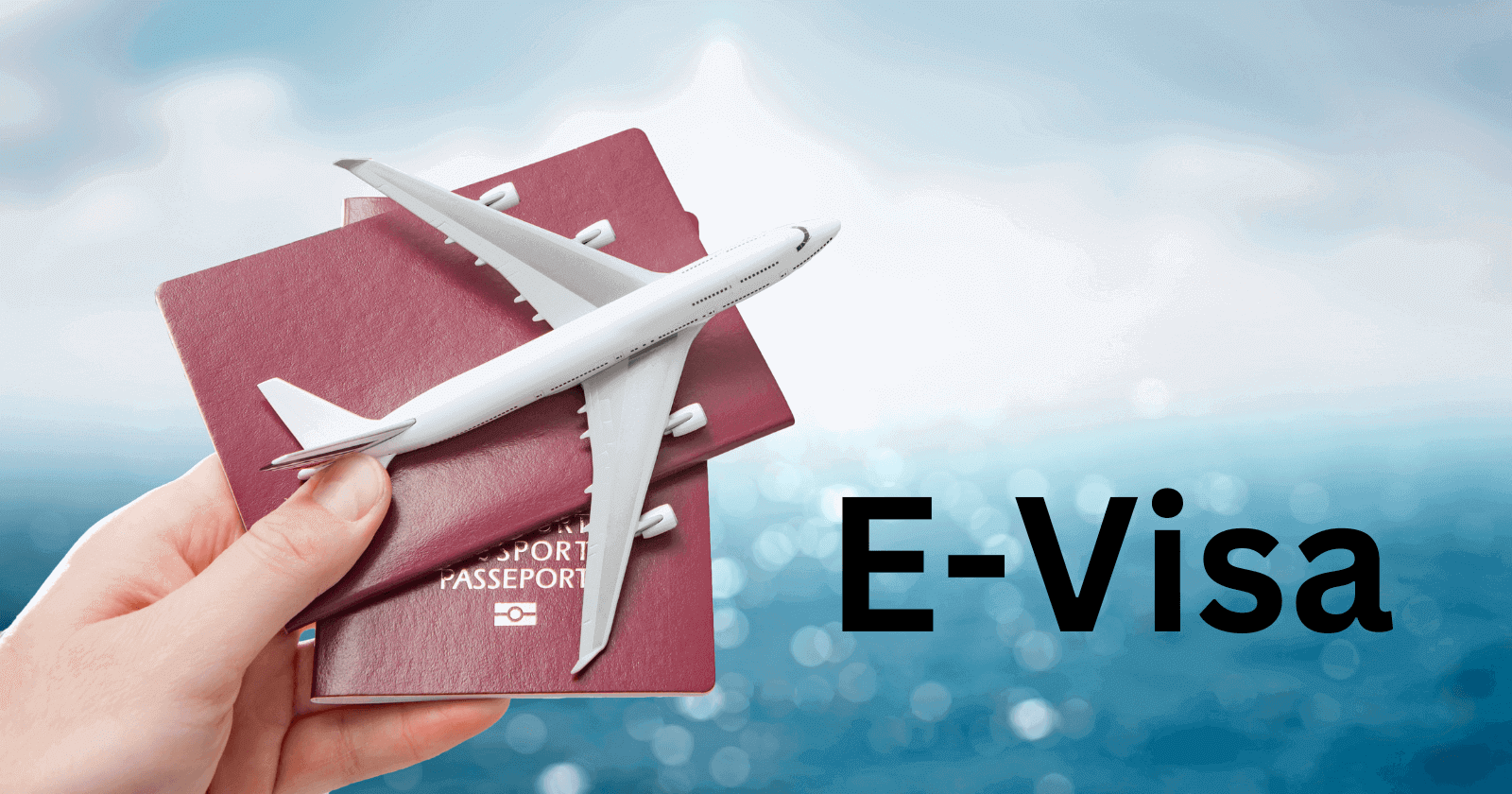
To be eligible to apply for a Vietnam e-visa online, applicants must meet the following requirements:
- Hold a passport from an eligible country (includes all countries worldwide as of August 2022)
- Passport must be valid for at least 6 months beyond arrival date
- Have at least 2 blank pages left in passport
- Upload color passport photo (jpeg, png, or pdf format)
- Provide scanned copy of passport biodata page
- Have a debit/credit card for paying the visa fee
- Provide detailed travel itinerary
- Provide contact details of accommodation in Vietnam
- Be able to demonstrate sufficient funds to cover expenses during stay
In addition, applicants should check they are eligible to enter Vietnam under normal immigration rules. For example, anyone who has previously been deported from Vietnam will be ineligible.
Minors under 18 years of age traveling alone or without their parents/legal guardians may also face additional requirements. Check with the Vietnamese embassy before applying.
Provided all requirements are met, eligible applicants from any country can successfully obtain approval for a Vietnam e-visa.
Vietnam eVisa processing time
The standard Vietnam e-visa processing time is approximately 3 working days. This means most applications are approved within 3 business days from the date of submission.
Working days refers to Monday-Friday and excludes weekends (Saturday Sunday) as well as public holidays in Vietnam.
Here is an overview of the typical e-visa processing timeline:
- Day 1 – Applicant completes online application form and uploads supporting documents. Payment is made.
- Day 2-3 – Application is processed by the Immigration Department
- Day 4 – If approved, the visa approval letter is emailed to the applicant.
However, processing times can sometimes be longer during peak periods when many applications are lodged, such as during Vietnamese public holidays or major international events being held in the country.
Additionally, applications may take longer than 3 days to process if:
- Mistakes were made on the application form
- Photos or documents uploaded were unclear
- Payments did not process correctly
To allow time for any unforeseen delays, it is generally recommended to submit your Vietnam e-visa application at least 5-7 days prior to your planned date of arrival. This helps ensure you will receive your approval letter in time for your trip.
For travelers who need an urgent visa within 1-3 days due to unforeseen circumstances, expedited processing is available for an additional fee.
Vietnam eVisa cost
The official government fee for a Vietnam e-visa is:
- Single entry: US$25
- Multiple entry: US$50
This basic fee is payable directly to the Vietnamese Immigration Department as the visa processing charge.
Applicants also need to factor in any service fees charged by the website/agency assisting with the application. Many travelers choose to use an online visa agency which generally charge around US$20-25 in service fees on top of the government fee.
So in total, the typical cost for a Vietnam e-visa breaks down as follows:
Single entry:
- Government fee: US$25
- Service fee: US$20-25
- Total: approximately US$45-50
Multiple entry:
- Government fee: US$50
- Service fee: US$20-25
- Total: approximately US$70-75
Payment can be made securely online using a credit card or debit card, including Visa, MasterCard, JCB and American Express.
Travelers who need urgent processing within 1-3 business days will incur additional rush fees. But for most standard applications, the total cost is around US$50 for single entry or US$75 for multiple entry e-visas.
Vietnam evisa application steps
Below are step-by-step instructions for successfully applying for and obtaining an approved Vietnam e-visa online:
Step 1 – Complete the online visa application form
- Access the official government website: https://www.immigration.gov.vn
- Click ‘Apply Online’ and select the visa type you require (single or multiple entry)
- Create an account and login
- Complete all required fields of the online form accurately. This includes:
- Personal details (name, DOB, nationality, occupation etc)
- Passport details
- Travel information (proposed entry date, entry exit ports, address in Vietnam etc)
- Upload your photo (must meet requirements)
- Provide billing details
- Read declaration and sign by ticking box
- Check all information thoroughly before submitting
Step 2 – Payment
- Payment screen will appear showing government fee + any service fees
- Check amount is correct and enter your card details
- Accept terms conditions and click Pay Now
- Payment will be processed through secure gateway
- Keep receipt as proof of payment
Step 3 – Wait for approval letter
- Typical processing time is 3 working days
- You will receive an email when your application is approved
- Download and print the PDF approval letter
- Check all details on letter are correct including name, passport number, dates etc
- Bring the approval letter to present to immigration upon arrival
- Approval letter will contain unique QR code which will be scanned at airport/border
And that’s it! Following these simple steps allows travelers to obtain a valid Vietnam e-visa approval letter and gain entry permission before traveling to Vietnam.
Vietnam Evisa Extension
A Vietnam eVisa is an electronic visa that allows visitors to travel to and enter Vietnam without having to obtain a visa from a Vietnamese embassy or consulate. E-visas are available to citizens of eligible countries and can be applied for online.
Can I extend my Vietnam eVisa?
No, you cannot extend your Vietnam eVisa. If you need to stay in Vietnam for longer than your eVisa is valid, you will need to either:
- Depart Vietnam and apply for a new eVisa upon your return. This is known as a “visa run.”
- Apply for a visa on arrival at a Vietnamese international airport. This option is only available to citizens of certain countries and may be more expensive than applying for an eVisa in advance.
Important note: As of August 15, 2023, the validity of Vietnam eVisas has been extended from 30 days to 90 days. This means that travelers who apply for their visa from this date can stay in Vietnam for up to 3 months, avoiding the need for a visa renewal.
Vietnam eVisa Service
Many applicants choose to apply via professional visa services rather than directly through the official government website.
There are several key benefits to using a Vietnam e-visa service:
- No queues or paperwork – Avoid embassy queues and fuss of printing out forms
- Guidance provided – Get help completing the forms correctly
- Fast-track processing – Applications are submitted urgently and handled as priority
- Relieve uncertainty – Reassurance that your visa is being handled by experts
- 24/7 support – Ability to ask questions and get assistance throughout the process
- Peace of mind – Confidence that your visa will be approved in time
When weighing up whether to apply directly or use a service, keep these benefits in mind. The extra cost is usually money well spent to give you greater peace of mind and handle the administrative process on your behalf.
There are a number of visa agencies to choose from. We recommend selecting an accredited service with strong customer service reviews. Some apply an additional fee for faster processing, so factor this into your budget if needed.
In summary, applying through a professional e-visa service, such as Vietnam Visa, takes all the hassle out of obtaining your approval letter smoothly and punctually.
Overview Vietnam evisa
To recap, here are the key features that characterize Vietnam’s electronic visa system:
- Online application – Entire process from forms to payment to approval is done online
- Fast – Typical approval in just 3 working days
- Convenient – Apply anywhere without embassy visits
- Eligible for all countries – Open to citizens of every nationality worldwide
- Less restrictions – Available for tourism, business, and family visits
- Paperless – Approval letter is delivered by email in PDF format
- QR code – Contains unique code to authenticate visa on arrival
- Set validity – 30 days from entry date; no extensions permitted
- Multiple entries permitted – Option to obtain 30-day multiple entry validity
- Fee per application – Government fee of US$25 (single) or $50 (multiple)
- Secure payment – Paid by credit/debit card on government website
In recent years, an increasing number of countries have introduced e-visa programs modeled on the Vietnam system. The electronic approval process has proven very successful, facilitating tourism and trade.
For travelers, being able to obtain an official Vietnam visa authorization online quickly and easily is a huge bonus. The eVisa program has greatly enhanced Vietnam’s accessibility to international visitors.
Pros and Cons Vietnam evisa
Vietnam’s e-visa system offers a simplified visa application process online. But is it right for you? Here we break down the main pros and cons:
Pros
- Easy and fast – Entire process completed online in 10-15 minutes
- No embassy visit required – Avoid in-person applications
- Secure payment – Online payment by major credit/debit cards
- Fast processing – Approved within 3 working days typically
- Accepted for entry – As valid as regular sticker visas
- No visa stamping – Avoid embassy queues and hassles
- Multiple entries – Option to get 30-day multiple entry validity
- Professional help available – Can use reputable visa services
Cons
- Fixed validity – Cannot be extended beyond 30 days
- Entry limitations – Must enter exit via nominated port
- Fees apply – Government and service fees (around US$50-75)
- No amendments – Must re-apply if changes required
- Strict requirements – Photos and documents must meet rules
- Website difficulties – Official site only # Similar products Vietnam evisa
5 FAQs Vietnam evisa
Here are answers to 5 of the most frequently asked questions about Vietnam’s electronic visa system:
1. How long does it take to get approved for a Vietnam e-visa?
Standard processing time is around 3 working days. But urgent processing can be completed in as little as 24 hours for an additional fast-track fee.
2. Can I apply for an e-visa upon arrival at the airport in Vietnam?
No, you cannot obtain an e-visa on arrival. Applications must be submitted online at least 3 days in advance.
3. What is the maximum stay allowed on a Vietnam e-visa?
E-visas allow a maximum stay of 30 days in Vietnam. They cannot be extended – you must exit Vietnam and apply for a new e-visa if wishing to return.
4. Can I enter Vietnam at any port with an e-visa?
No, your e-visa will specify which entry point you’re approved to enter through. This cannot be changed once issued.
5. How do I check the status of my Vietnam e-visa application?
You can check your application status via the official government website using your passport, name, DOB details. Expect approval email within 3 working days.
Conclusion
Vietnam’s e-visa system offers citizens of all countries a simple and convenient way to gain pre-approval for entry to Vietnam in just 3-4 days. The entirely online application process is fast and straightforward. With eligibility expanded worldwide in 2022, millions more prospective tourists can now obtain authorization via e-visa rather than through Vietnamese embassies. While e-visas have some limitations, overall they provide an easy and smooth visa solution for short 1-2 week trips to discover Vietnam.

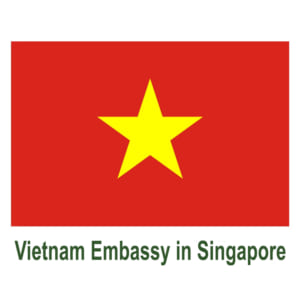

Dear officer
Can i know for the e-visa (3months single entry),
if i stated the period to travel into Vietnam is 1st Dec 2023 – 28 Feb 2024.
Arrival : Can i arrive later than 1st Dec 2023 into Vietnam,
Departure : I can only stay up till 28 Feb 2024? And i must leave right?
Pls advise me. Thank u